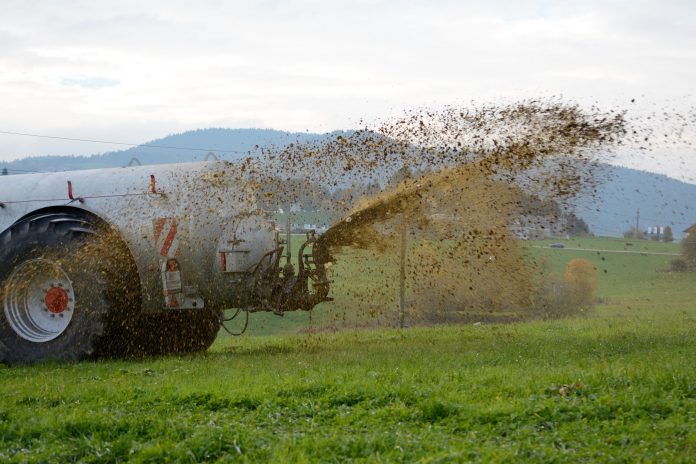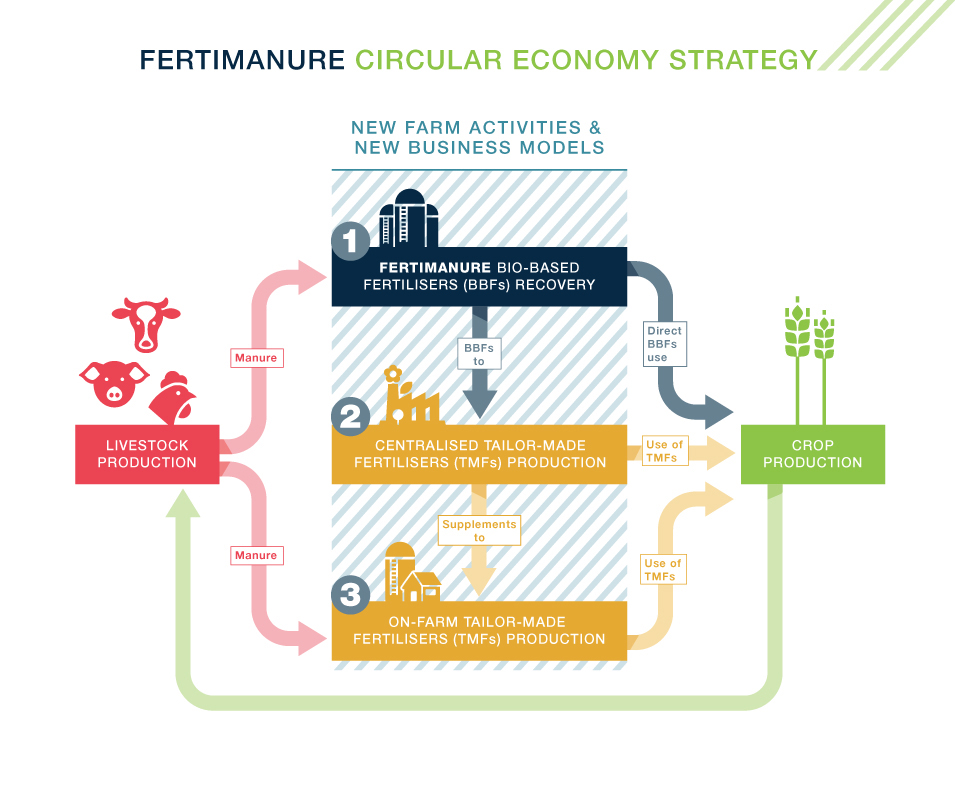Laia Llenas explains the FERTIMANURE project, which aims to close the manure nutrient cycle by providing innovative manure management strategies and business models to take new fertilising products to the EU market
The EU livestock sector is the largest in the world, and manure is by far the largest nutrient-rich residual biomass flow of the food chain. There is substantial scope to recover these nutrients, and the challenge is to upcycle this biomass into tailor-made fertilisers that match the requirements of different crops, improving nutrient use efficiencies and minimising losses to the environment.
While the production of mineral fertilisers from non-renewable resources like rock phosphate or natural gas for the production of nitrogenous fertilisers have contributed to global food security, the current dependency of EU agriculture on these scarce resources must be regarded as a very serious threat and challenge to future food security.
FERTIMANURE is an 8.4 million Euro project co-funded by the European Commission under the H2020 programme. The project is coordinated by BETA Technological Centre (Catalonia, Spain) and brings together 20 partners with complementary knowledge (scientific, practical, political and others) and with different profiles (RTDs, SMEs, Large industries, multipliers and policymakers) from seven EU countries, Argentina and Chile.
Technological innovation for nutrient recovery: On-farm pilots
On one hand, FERTIMANURE aims to demonstrate innovative technological solutions which recover nutrients from animal manure. This is tested in five on-farm experimental pilots in different European regions with substantial livestock production (Spain, France, Germany, Belgium, The Netherlands), representing the cow, pig, and poultry-raising industries. The objective is to obtain homogeneous, standardised and safe bio-based fertilisers (BBF) and tailor-made fertilisers (TMFs) that can be competitive in the market and complement conventional non-renewable mineral fertilisers.
Innovative nutrient management strategies
FERTIMANURE will pursue three different nutrient managements and use strategies adapted to mixed and specialised farming systems.
Strategy #1: The bio-based fertilisers (e.g. (NH4)2SO4, NH4NO3) obtained in the FERTIMANURE pilots can be directly used on-farm. However, the nutrient composition of these BBF will not match crop extractions. Therefore, when more balanced fertilisers formulations are needed, tailor-made fertilisers (TMF) will be formulated and used.
The production of TMF will allow for more efficient fertilisation strategies, including precision farming and higher nutrient use efficiencies, with concomitant economic and environmental benefits. FERTIMANURE TMF production will follow two different but complementary approaches:
On one hand, centralised TMF production pilots in FERTIMANURE (Strategy #2) will use the nutrients recovered in the on-farm pilots in combination with other supplements. In this case, TMFs will be produced in centralised chemical facilities. Secondly, TMFs will also be produced on-farm (Strategy #3) by adjusting nutrient contents and physical-chemical properties of raw manure and adding supplements provided by the chemical industry.
Considering the above, Strategy #2 (centralised) is better suited for situations with high regional animal stocking densities where the excess nutrients must be exported from the region, whereas Strategy #3 (on-farm) targets mixed farming systems, where nutrients are most useful locally. These approaches complement each other and will contribute to solving inter- and intra-regional nutrient imbalances.
In FERTIMANURE, nutrient management does not end with TMF formulation, but will involve the development of integrated fertilisation programmes and the testing and validation of the agronomic performance and economic and environmental life cycles of the developed end-products.
FERTIMANURE circular economy strategy
The FERTIMANURE project joins technological innovation for nutrient recovery together with efficient and effective nutrient management schemes which are sensitive to regional constraints. This approach creates a new circular business model aimed at closing nutrient cycles and simultaneously promotes rural development by creating new agricultural and industrial business opportunities that bring together different sectors (agricultural, chemical, and technological). There are a number of underexploited opportunities in this domain which are pursued by the project:
- Livestock sector: Diversify revenue sources. Improved nutrient recovery brings new business opportunities in the fertilisers market.
- Agricultural sector: Develop fully characterised and standardised fertilising products that will overcome the inherent variability of animal manure, while achieving the same consistency in performance as conventional mineral fertilisers.
- Chemical industry: Diversify nutrient sources used in the production of fertilising products. Adapt to local and regional circumstances with sales to on-farm and centralised producers.
- Technology providers: New market opportunities for companies providing efficient and effective technologies for nutrient recovery.
- Society: Alternative and more sustainable nutrient sources that will, in the long-term, ensure food security and sustainable agriculture.
“We are confident that FERTIMANURE will lead to breakthroughs in manure management by developing a new circular business model aimed at closing nutrient cycles at the regional and EU levels.”
Please note: This is a commercial profile












